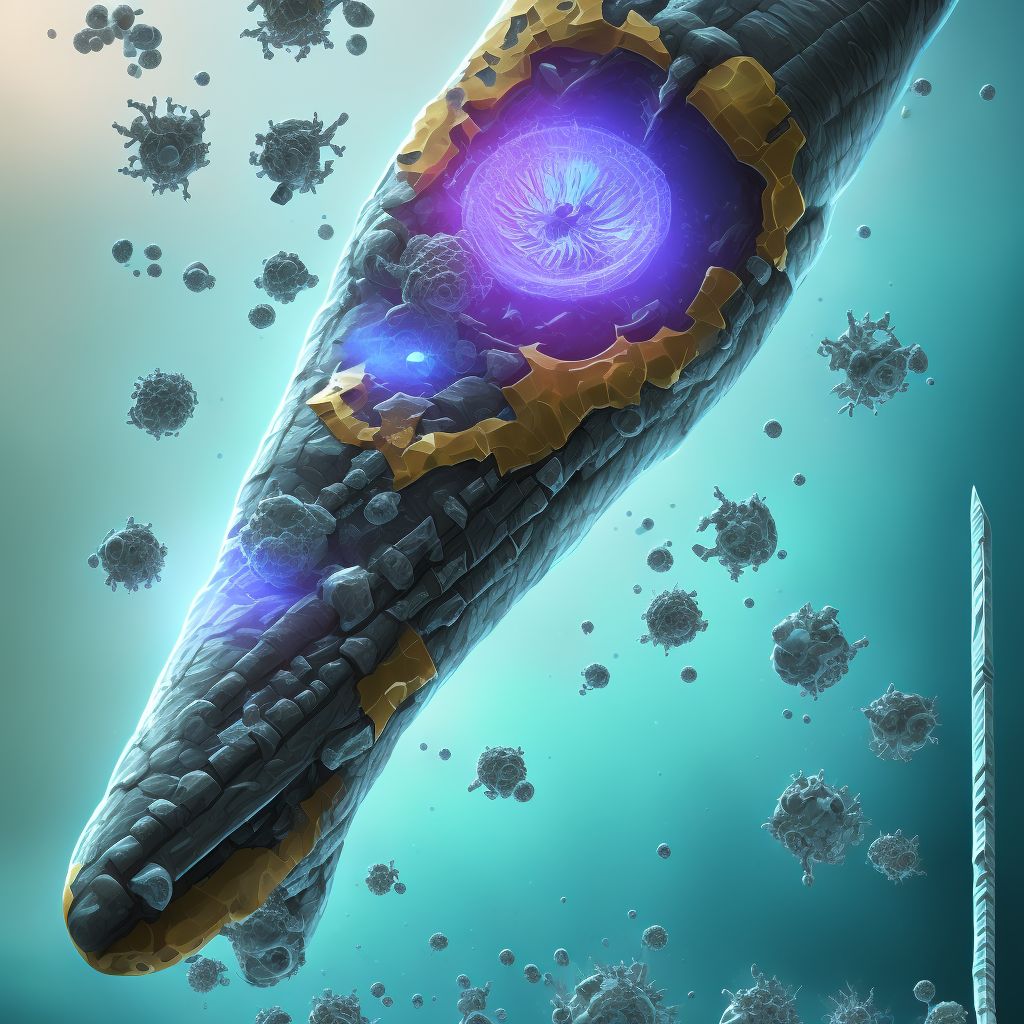
Nondisplaced spiral fracture of shaft of left tibia, initial encounter for open fracture type I or II Save
ICD-10 code: S82.245B
Disease category: S82.245: Nondisplaced spiral fracture of shaft of left tibia
Nondisplaced Spiral Fracture of Shaft of Left Tibia: Understanding an Open Fracture Type I or II
A nondisplaced spiral fracture of the shaft of the left tibia refers to a specific type of fracture that occurs in the long bone of the lower leg. When such a fracture is categorized as an open fracture type I or II, it means that the bone has broken through the skin, resulting in an external wound. This initial encounter with an open fracture requires prompt medical attention to ensure proper diagnosis and appropriate treatment.
Open fractures are classified based on the severity of the wound and the degree of contamination. Type I or II open fractures are relatively less severe compared to higher-grade injuries but still necessitate immediate medical intervention.
When a nondisplaced spiral fracture occurs, it means that the bone has broken in a twisting motion, resulting in a spiral-shaped fracture line along the shaft of the tibia. This type of fracture is often caused by rotational forces or direct trauma, such as during sports activities or accidents.
During the initial encounter with an open fracture type I or II, medical professionals will focus on assessing the extent of the injury, ensuring the wound is clean, and preventing infection. They may perform imaging tests, such as X-rays, to obtain a clear picture of the fracture and determine if any bone fragments need realignment.
Patients with nondisplaced spiral fractures of the left tibia may experience pain, swelling, and difficulty bearing weight on the affected leg. It is crucial to follow medical advice and avoid putting any unnecessary stress on the injured leg to promote healing and prevent further damage.
- Immediate medical attention is essential to assess and treat the open fracture.
- Open fractures type I or II refer to fractures where the bone has broken through the skin.
- Nondisplaced spiral fractures occur when the tibia bone breaks in a twisting motion.
- An initial encounter focuses on evaluating the injury, cleaning the wound, and preventing infection.
- Patients may experience pain, swelling, and difficulty bearing weight on the affected leg.
In conclusion, a nondisplaced spiral fracture of the shaft of the left tibia during an initial encounter for an open fracture type I or II requires immediate medical attention. Understanding the nature of the injury, its classification, and the importance of proper assessment and wound care is crucial for effective treatment and recovery.
Treatment of Nondisplaced spiral fracture of shaft of left tibia, initial encounter for open fracture type I or II:
Treatment Options for Nondisplaced Spiral Fracture of the Shaft of Left Tibia, Initial Encounter for Open Fracture Type I or II
When it comes to a nondisplaced spiral fracture of the shaft of the left tibia, initial medical attention is crucial. This type of fracture, categorized as an open fracture type I or II, requires immediate treatment to ensure proper healing and minimize po...
To see full information about treatment please Sign up or Log in